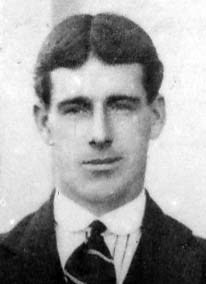
340
SANDERCOCK, George Frederick
| Service Number: | 2475 |
|---|---|
| Enlisted: | Not yet discovered |
| Last Rank: | Private |
| Last Unit: | 50th Infantry Battalion |
| Born: | Balhannah, South Australia, 11 April 1889 |
| Home Town: | Parkside, Unley, South Australia |
| Schooling: | Balhannah School, South Australia |
| Occupation: | Farrier |
| Died: | Daw Park, South Australia, 19 May 1968, aged 79 years, cause of death not yet discovered |
| Cemetery: |
Centennial Park Cemetery, South Australia Coumbarium, Wall7, Niche F014 |
| Memorials: | Balhannah Old Scholars Roll of Honor, South Australian Garden of Remembrance , Unley Town Hall WW1 Honour Board |
World War 1 Service
| 21 Sep 1916: | Involvement Private, 2475, 50th Infantry Battalion, --- :embarkation_roll: roll_number: '19' embarkation_place: Adelaide embarkation_ship: HMAT Commonwealth embarkation_ship_number: A73 public_note: '' | |
|---|---|---|
| 21 Sep 1916: | Embarked Private, 2475, 50th Infantry Battalion, HMAT Commonwealth, Adelaide |
George Frederick Sandercock
Name: George Frederick Sandercock
Service Number: 2475
Place of Birth: Balhannah
Date of Birth: 11 April 1889
Place of Enlistment: Adelaide
Date of Enlistment: 28 April 1916
Age at Enlistment: 27 years
Next of Kin: Mother, Margaret Sandercock
Occupation: Farrier
Religion: Church of England
Rank: Private
George embarked with the 50th Battalion on the Commonwealth from Sydney on 19 September 1916 and proceeded to France on 8 January 1917. He was wounded in action on 17 October when a gas shell penetrated his left knee resulting in the destruction of soft tissues above the heel. After initially receiving treatment in the field George was sent to hospital at Chatham in England. The injury led to George returning to Australia on the Karoola on 25 November and being discharged as medically unfit on 5 July 1918.
Submitted 23 October 2023 by christopher collins
Biography
George Frederick Sandercock lived on 40 Castle Street Parkside South Australia with his mother Mrs Margaret Sandercock and his brothers who Also fought in the war. His brothers were 4508 Pte Arthur Jubilee SANDERCOCK, Australian Army Veterinary Hospital, returned to Australia, 19 April 1919; 3898 Driver James SANDERCOCK, 20th Company, Australian Army Service Corps, returned to Australia, 15 May 1919; 2217 Company Quartermaster Sergeant Robert SANDERCOCK, 50th Bn, returned to Australia, 5 April 1919; 5916 Staff Sergeant Thomas Best SANDERCOCK, 20th Company, Australian Army Service Corps, returned to Australia, 15 May 1918.
George was born on the 11th of April in Balhanna SA and prior to the war he worked as a farrier (someone who cleans horse shoes). He was enrolled on April 28 1916 and embarked from Adelaide SA on September 21 1916 when he was 27 years of age.
On October 17th 1917 George was wounded in battle by a gas shell that damaged his left hand. He was discharged from battle due to being medically unfit on 5/7/18. He served for 2 years and 69 days in total. He later got awarded with the 1914/1915 star medal, the British war medal and the victory medal.
Biography contributed by tony griffin
George was born at Balhannah on 11 April 1889. He was the son of George and Margaret Sandercock. At the time of his enlistment, he was employed as a farrier in the family business of Geo. Sandercock and sons.
The 27 year old enlisted in Adelaide on 28 April 1916 and after initial training was appointed to 5 Reinforcements 50 Battalion. The reinforcements embarked from Adelaide aboard A73 Commonwealth on 21 September 1916 and disembarked in Plymouth, England on 14 November. The following day George marched into 13 Training Battalion at Codford until going abroad to France on 8 January aboard Princess Henrietta. A week later he was taken on strength of 50 Battalion.
Early in 1917, the battalion participated in the advance that followed the German retreat to the Hindenburg Line, and attacked at Noreuil on 2 April. Later that year, the focus of AIF operations moved to the Ypres sector in Belgium. There the battalion was involved in the battle of Messines between 7 and 12 June and the battle of Polygon Wood on 26 September. Another winter of trench routine followed. During the attack on Noreuil George was witness to the death of a comrade and gave the following account.
“Our objective was the village of Noreuil and the railway line beyond. Just as we were going into the village they opened M/G fire and he was killed and buried in the cemetery in front of Noreuil.”
In October 1917 50 Battalion was positioned on Broodseinde Ridge and each day was subjected to scattered intermittent shelling. At 11.45pm on the night of 16 October the enemy used gas shells on the western slope of the ridge resulting in a wound to George’s left leg. He was taken from the field by 3 Australian Field Ambulance to St. John’s Hospital at Etaples. On 23 October George was evacuated to England aboard HS Pieter de Conick and admitted to the Military Hospital at Chatham.
With destruction of soft tissues above the heel George was now unfit for military service and on 25 November returned to Australia aboard HS Karoola. George was discharged on 5 July 1918.
George married Olive Alicia Ninham on 27 May 1921, Their only child Ngaire was born on 18 May 1922. George died at Daw Park on 19 May 1968, aged 79 and his ashes placed at Pasadena Columbarium, Wall 7, Niche F014.
George's father G93 Corporal George Sandercock, 4MD Reserve Guard; and four brothers 4508 Shoeing-Smith Arthur Jubilee Sandercock, 27 Bn AIF/ Aus Veterinary Hospital; 8960 Farrier Staff Sergeant Thomas Best Sandercock, 20 Coy Army Service Corps; 3898 Driver James Sandercock, 10 Bn AIF/20 Coy Army Service Corps; 2217 Coy Quartermaster Sergeant Robert Sandercock 10 Bn AIF/50 Bn AIF; served in World War One and two brothers A471 Sergeant Roland John Sandercock, RAAF; and SX115 Lance Sergeant Roy Sandercock, 2/10 Bn AIF served in World War Two.










